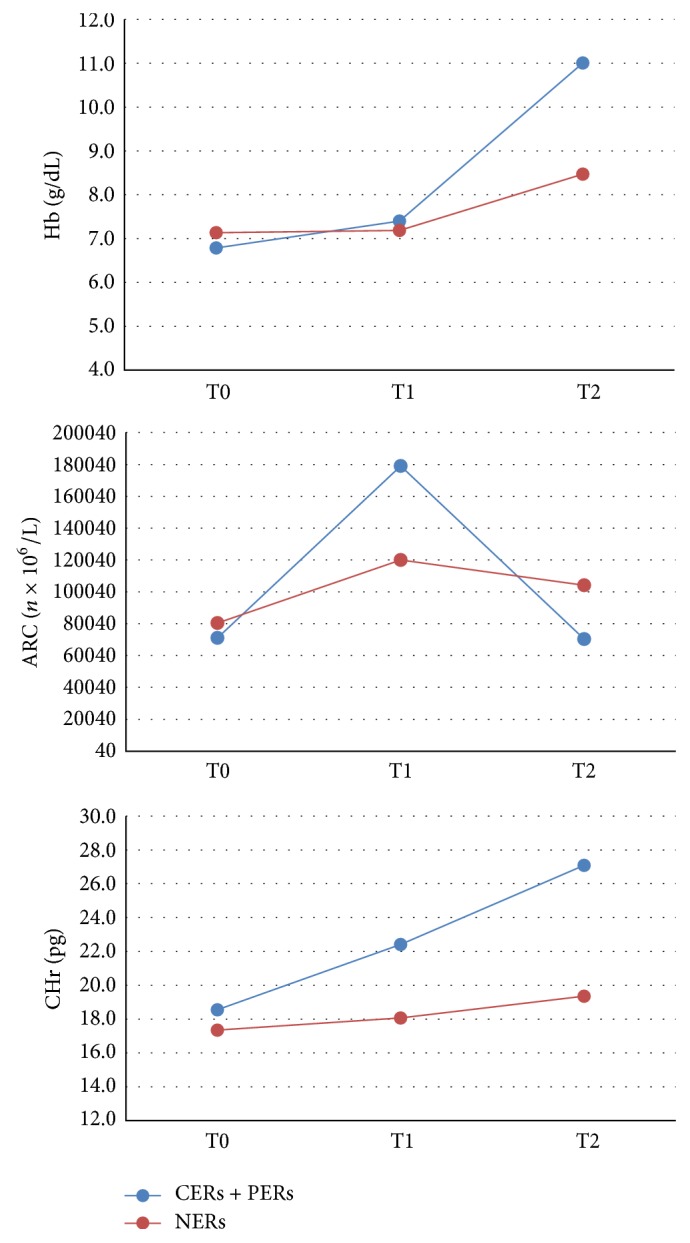Absolute Reticulocyte Count and Reticulocyte Hemoglobin Content as Predictors of Early Response to Exclusive Oral Iron in Children with Iron Deficiency Anemia.
IF 2.2
Q3 HEMATOLOGY
引用次数: 22
Abstract
We report data regarding kinetic of response to oral iron in 34 iron deficiency anemia children. Twenty-four/34 patients (70.5%) reached reference value of hemoglobin (Hb) concentration for age and sex at day + 30 from the beginning of treatment (complete early responders (CERs)), and 4/34 (12%) reached an Hb concentration at least 50% higher than the original (partial early responders (PERs)). CHr at T1 (within 7 days from the beginning of treatment) was significantly different in the different groups (22.95 in CERs versus 18.41 in other patients; p = 0.001; 22.42 in early responders versus 18.07 in NERs; p = 0.001). Relative increase of CHr from T0 to T1 resulted significantly higher in CERs than in other patients (0.21 versus 0.11, p = 0.042) and in early responders than in NERs (0.22 versus 0.004, p = 0.006). Multivariate logistic models revealed a higher probability of being a complete early responder due to relative increase of ARC from T0 to T1 [OR (95% CI) = 44.95 (1.54–1311.98)] and to CHr at T1 [OR (95% CI) =3.18 (1.24–8.17)]. Our preliminary data confirm CHr as early and accurate predictor of hematological response to oral iron.

绝对网织红细胞计数和网织红细胞血红蛋白含量作为缺铁性贫血儿童口服铁治疗早期反应的预测指标。
我们报告了34例缺铁性贫血儿童口服铁反应动力学的数据。24 /34例患者(70.5%)在治疗开始后第30天达到年龄和性别血红蛋白(Hb)浓度参考值(完全早期反应者(CERs)), 4/34例(12%)的Hb浓度比原始(部分早期反应者(PERs))至少高出50%。不同组T1时(治疗开始后7天内)的CHr有显著差异(CERs组22.95,其他组18.41;P = 0.001;早期响应者为22.42,晚期响应者为18.07;P = 0.001)。从T0到T1的CHr相对升高导致cer患者显著高于其他患者(0.21比0.11,p = 0.042),早期应答者显著高于ner患者(0.22比0.004,p = 0.006)。多变量logistic模型显示,由于ARC从T0到T1的相对增加[OR (95% CI) = 44.95(1.54-1311.98)]和T1时的CHr [OR (95% CI) =3.18(1.24-8.17)],成为完全早期应答者的可能性更高。我们的初步数据证实CHr是口服铁的血液学反应的早期和准确的预测因子。
本文章由计算机程序翻译,如有差异,请以英文原文为准。
求助全文
约1分钟内获得全文
求助全文
来源期刊

Anemia
HEMATOLOGY-
CiteScore
4.80
自引率
3.40%
发文量
11
审稿时长
18 weeks
期刊介绍:
Anemia is a peer-reviewed, Open Access journal that publishes original research articles, review articles, and clinical studies on all types of anemia. Articles focusing on patient care, health systems, epidemiology, and animal models will be considered, among other relevant topics. Affecting roughly one third of the world’s population, anemia is a major public health concern. The journal aims to facilitate the exchange of research addressing global health and mortality relating to anemia and associated diseases.
 求助内容:
求助内容: 应助结果提醒方式:
应助结果提醒方式:


